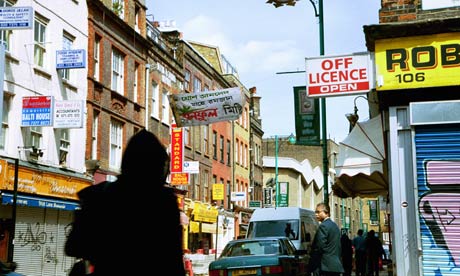
The citizens of London are facing a new threat: I'm bumping into people up and down the streets of the capital. Not because I've got my nose stuck in a traditional tome — on the contrary. I've become one of those people who traipse down the street attached to their smartphone, thumbs a-go-go. Truth is, I've become hooked on this free Get London Reading app, which brings the locale you are in at any given moment to literary life.
This absorption in literary tech is not without its dangers. I came within an inch of a nasty entanglement with a cyclist at the junction of Southwark Bridge Road and Great Suffolk Street as I discovered Andrew Martin's The Necropolis Railway. I've lived in SE1 for a long time now, but embarrassingly both this novel and the historical existence of The Necropolis Railway, the "coffin-line", had escaped my notice. No longer.
When you stop and think about it, this literary landscape has always been there, remapping the physical space around us. The literary life and history which make up this alternative cartography remind us that cities are not simply a matter of bricks and mortar. Cities have a life beyond bricks, of ideas, of stories, of struggles, which books capture and preserve. In this sense, books are a very particular and important distraction. They take us out of the here and now, pushing against the constrictions of time and place.
And we don't have to haunt libraries to encounter this living literary history. The ability of books to take us out of ourselves, to burst the bubbles of our humdrum preoccupations, doesn't depend on being cloistered away for some literary time out. Books constantly grab your attention when you're out and about in London, from the interesting-looking volume in the hands of a fellow passenger on the 68 bus, to books beckoning you from shop windows as you scuttle between meetings.
Books insert themselves into the public spaces of our cities. They get in our faces when we least expect it. They are the physical signatures of ideas and arguments which have created and contributed to a city's politics and culture over time. Books in any city in the world will tell a story which spreads far beyond that city's limits, from Kolkata's College Street to the Left Bank booksellers in Paris.
There is much discussion about what technology means for the future of literature: this discussion has been going on for many years now and will go on for many years to come. A bit of kit like the Get London Reading app reminds us that far from threatening literature's future, with enough imagination technology can set it free. That imagination can look back at history as well as forwards, bringing the rich literary heritage of the streets we walk down to life. My apologies to London cyclists in advance.

